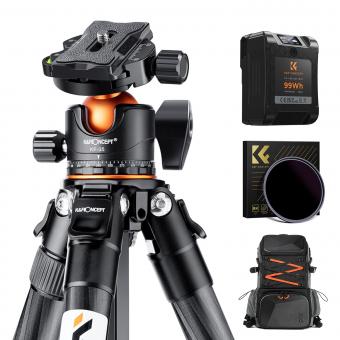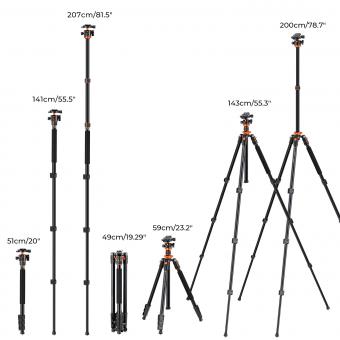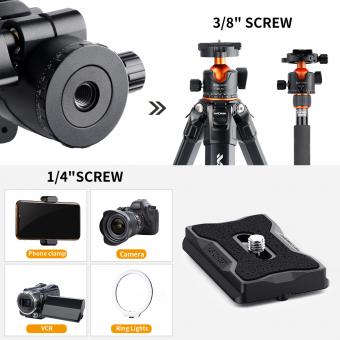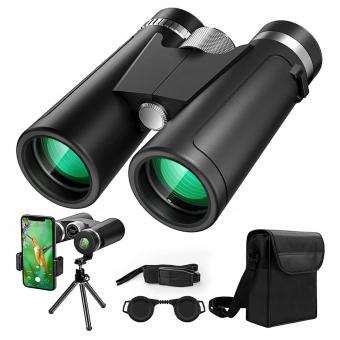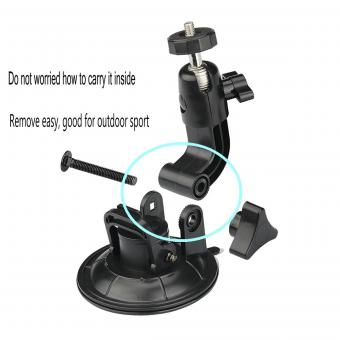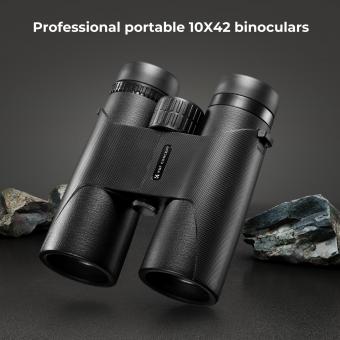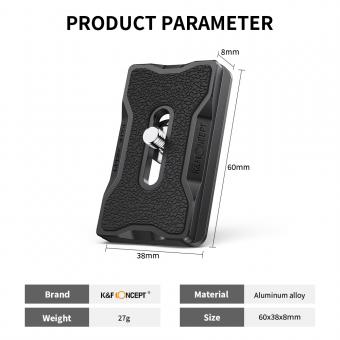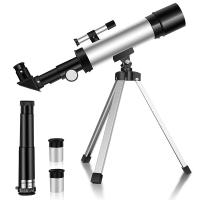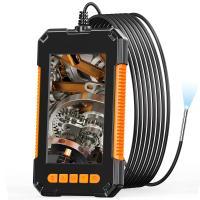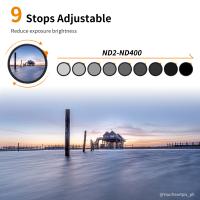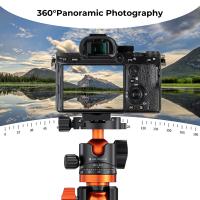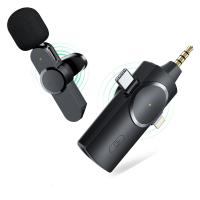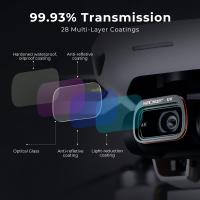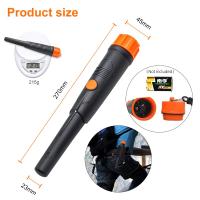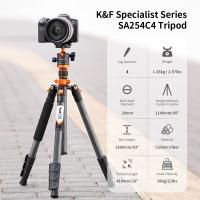How Much Tripod ?
The price of a tripod can vary depending on the brand, quality, and features. Tripods can range from as low as $20 to several hundred dollars or more. It is important to consider your specific needs and budget when choosing a tripod.
1、 Types of tripods for photography and videography
When it comes to tripods for photography and videography, there are various types available in the market to suit different needs and preferences. The choice of tripod depends on factors such as the type of camera or equipment being used, the shooting environment, and the intended purpose.
One of the most common types of tripods is the traditional tripod with three legs. These tripods are versatile and can be adjusted to different heights and angles. They are suitable for a wide range of photography and videography applications, from landscape photography to studio shoots.
Another popular type is the compact or travel tripod. These tripods are lightweight and portable, making them ideal for photographers and videographers on the go. They are designed to be easily folded and carried in a bag or backpack, making them perfect for travel photography or outdoor adventures.
For those who require more stability and support, there are also heavy-duty tripods available. These tripods are built to withstand heavier cameras and equipment, providing a sturdy base for professional photographers and videographers. They often come with additional features such as a leveling bubble or a built-in spirit level to ensure precise positioning.
In recent years, there has been a rise in the popularity of flexible tripods. These tripods have bendable legs that can be wrapped around objects such as tree branches or railings, allowing for unique and creative angles. They are particularly useful for outdoor photography or vlogging.
Additionally, there are specialized tripods designed for specific purposes, such as tabletop tripods for close-up shots or monopods for capturing smooth video footage while on the move.
In conclusion, the choice of tripod depends on individual needs and preferences. Whether you are a professional photographer or a hobbyist, there is a wide range of tripods available to suit your specific requirements. It is important to consider factors such as stability, portability, and additional features when selecting a tripod for photography and videography.
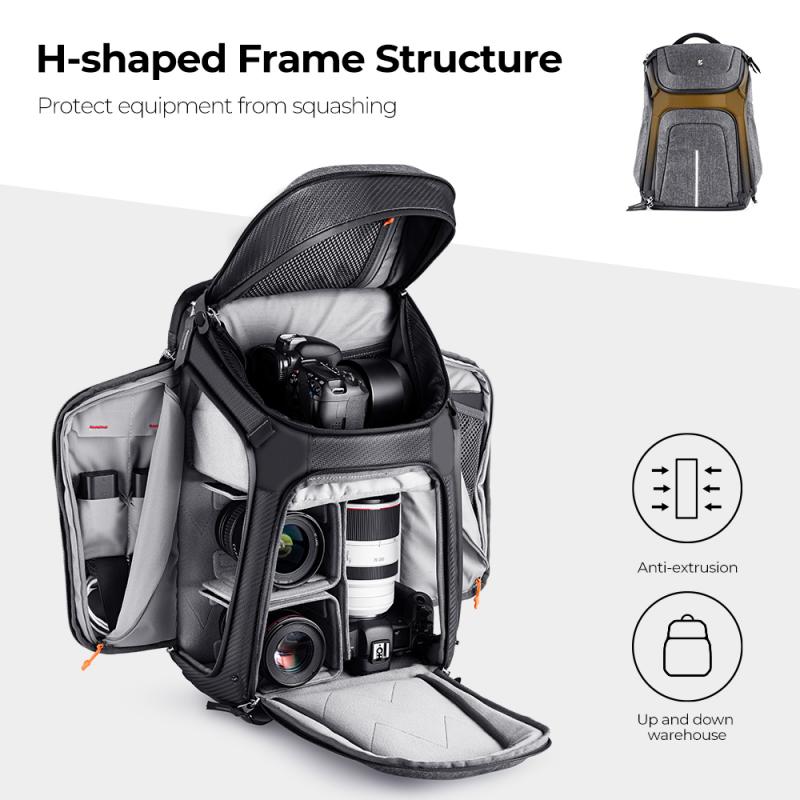
2、 Tripod materials and construction
The cost of a tripod can vary depending on various factors such as the brand, quality, and features. Tripods are available in a wide range of prices, starting from as low as $20 for basic models to several hundred dollars for professional-grade tripods. The materials and construction of a tripod play a significant role in determining its price.
Tripods are commonly made from materials such as aluminum, carbon fiber, or a combination of both. Aluminum tripods are generally more affordable compared to carbon fiber ones. Aluminum tripods are sturdy and durable, making them suitable for most photography needs. On the other hand, carbon fiber tripods are lighter in weight, making them ideal for travel and outdoor photography. However, they tend to be more expensive due to the higher cost of carbon fiber materials.
The construction of a tripod also affects its price. Higher-end tripods often feature advanced construction techniques and additional features such as adjustable leg angles, quick-release mechanisms, and built-in levels. These features enhance stability, ease of use, and versatility, but they also contribute to the overall cost of the tripod.
It is important to consider your specific photography needs and budget when choosing a tripod. If you are a casual photographer or just starting out, a basic aluminum tripod may be sufficient. However, if you are a professional or require a tripod for specialized purposes such as wildlife or landscape photography, investing in a higher-quality tripod with advanced features may be worth considering.
In recent years, there has been a growing trend towards more lightweight and compact tripods to cater to the needs of travel and outdoor photographers. Manufacturers are constantly innovating and introducing new materials and construction techniques to make tripods more portable without compromising stability and durability. This has resulted in a wider range of options available in the market, catering to different budgets and preferences.
In conclusion, the cost of a tripod depends on various factors including materials, construction, and features. It is essential to assess your photography needs and budget to find the right tripod that offers the desired stability and functionality.
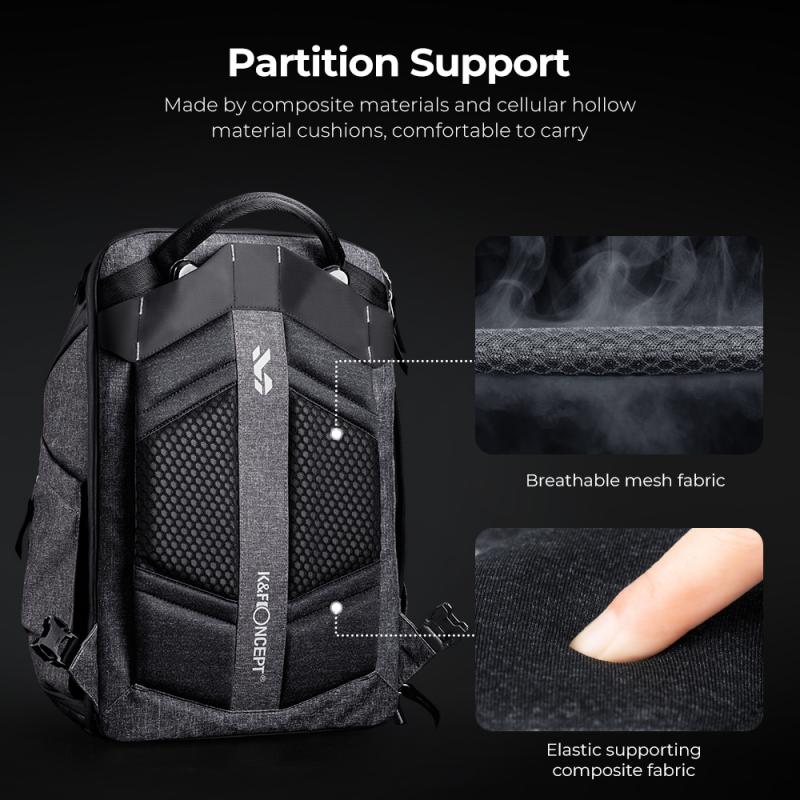
3、 Tripod height and weight capacity
The question is asking about the specifications of a tripod, specifically its height and weight capacity. Tripods are essential tools for photographers and videographers as they provide stability and support for cameras and other equipment. The height and weight capacity of a tripod are crucial factors to consider when choosing the right one for a particular purpose.
The height of a tripod refers to its maximum extension, which determines the shooting angle and perspective. Tripods come in various sizes, ranging from compact tabletop versions to full-sized models that can extend to several feet. The height requirement depends on the intended use and personal preference of the photographer. For example, landscape photographers may prefer taller tripods to capture wide-angle shots, while portrait photographers may opt for shorter tripods for more intimate compositions.
Weight capacity is another important consideration when selecting a tripod. It refers to the maximum weight that a tripod can support without compromising stability. The weight capacity should be able to handle the weight of the camera and any additional accessories, such as lenses or external flashes. It is advisable to choose a tripod with a weight capacity that exceeds the total weight of the equipment to ensure stability and prevent any potential accidents.
It is worth noting that the height and weight capacity of tripods have evolved over time due to advancements in technology and materials. Manufacturers are constantly improving their products to meet the demands of photographers and videographers. Therefore, it is recommended to research and compare different tripod models to find the one that best suits individual needs and preferences.
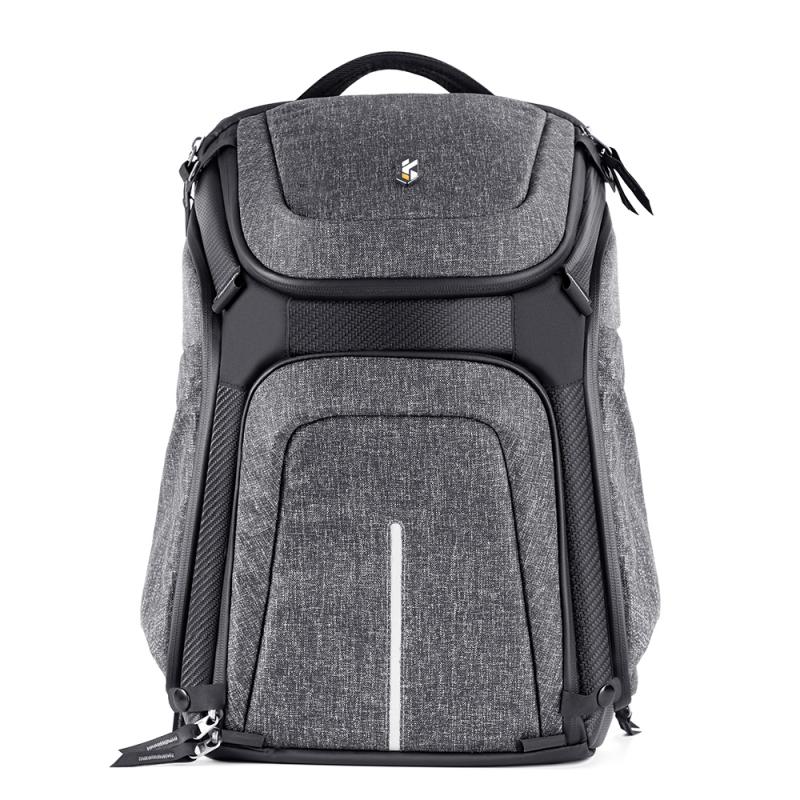
4、 Tripod head types and functionality
The tripod head is an essential component of a tripod system, as it allows for precise positioning and control of the camera. There are several tripod head types available in the market, each offering different functionalities to cater to the diverse needs of photographers.
One of the most common tripod head types is the ball head. It features a ball and socket joint that allows for smooth and quick adjustments in any direction. Ball heads are popular among photographers who require flexibility and speed in their shooting, such as wildlife or sports photographers. They are easy to use and provide a wide range of motion, making them suitable for various shooting angles.
Another popular tripod head type is the pan-tilt head. This type of head offers separate controls for panning and tilting movements, allowing for precise adjustments. Pan-tilt heads are commonly used in landscape and architectural photography, where precise composition is crucial. They provide smooth and controlled movements, making them ideal for capturing panoramic shots or architectural details.
Gimbal heads are gaining popularity among wildlife and telephoto lens photographers. They offer a unique design that allows for smooth and balanced movements, even with heavy camera setups. Gimbal heads are specifically designed to support long and heavy lenses, providing stability and ease of use when tracking fast-moving subjects.
In recent years, there has been a rise in the popularity of fluid heads, which are commonly used in video production. Fluid heads offer smooth and controlled movements, allowing for seamless panning and tilting during video recording. They are equipped with fluid cartridges that provide resistance, ensuring smooth camera movements.
It is important to consider the weight capacity, stability, and compatibility with your camera system when choosing a tripod head. Additionally, advancements in technology have led to the development of innovative features such as quick-release plates, bubble levels, and panoramic rotation options, which can enhance the functionality and convenience of tripod heads.
In conclusion, the tripod head type you choose depends on your specific shooting needs and preferences. Whether you require flexibility, precision, stability, or smooth movements, there is a tripod head available to suit your requirements. It is recommended to research and test different tripod head types to find the one that best fits your shooting style and equipment.






